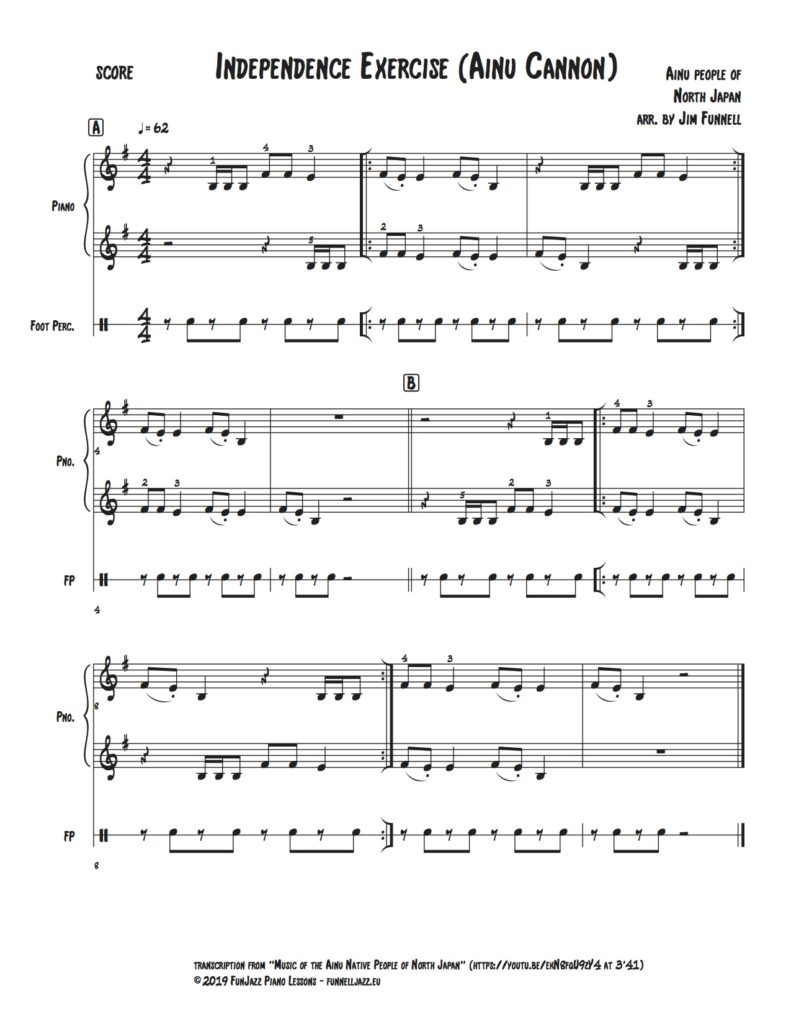Advantages of practicing to a loopable track
It goes without saying that the benefits of practicing really short passages of music, very slowly, and repeating them a great number of times, are prodigious (languages are also learnt more efficiently in that fashion). Imitation, repetition, and using an incremental process (starting out with a small bit of information and later adding other small bits, step by step) are key practice habits when it comes to your musical success.
These habits will help you “get into the zone,” or in other words will lull you into a soft meditative state conducive to deeply internalizing the music, feeling it in your whole being, sometimes to the point where you can almost sense that someone — or something — is playing the music through you, and you are just relaxing and observing… But I digress a little!1
The point is: this blissful state of “non-doing” in music can be reached by any of us, whether collectively within an ensemble, or when playing/practicing alone at your instrument. And in the latter case, a nifty little loop can come in quite handy! Playing to a click track/metronome is of course also a tried-and-tested method, particularly when aiming for steady tempo, solid groove, and genuine feel2. But there’s nothing like an audio loop to enjoy the added benefits provided by the external musical stimulation, and the inspiration that arises from it (short of playing with other live musicians!)
What’s in a good loop?
In my experience, both with students and in my own practice, the loops that have yielded the best results present the following characteristics:
- they are relatively short in length (1 to 8 measures or a section of a tune at most);
- focused on a challenging (though not insurmountable), or, to use another term, unfamiliar passage of music (trust me, after repeating it for a while it will become familiar, and that’s exactly what we want);
- set to an adequate tempo, most likely on the slower end of the spectrum (one of my professors at Berklee had some words of wisdom about that: “if you bulls#*t slow, you’ll bulls%$t fast!”)
In my lessons, I make a point of detecting specific passages of music students may have difficulties with. I then prepare loopable audio files (in WAV format, because converting to MP3 tends to add undesirable gaps of silence to the tracks, which in turn makes the loops lopsided) corresponding to these passages for them to practice with. All that is needed then, on the student’s end, is a simple app if they’re going to use their phone for playback (Loop Player does a great job on Android), or a piece of software if they’d rather use a computer. In the latter case, I thoroughly recommend familiarizing oneself with Audacity.
Getting started with Audacity
Audacity is a great little piece of software that will enable you to set a tempo you are comfortable with and play the file back as many times as needed, at the same pace and with no interruptions. So before you delve into the blissful state of non-doing in music, let’s take a closer look at a few simple, technical steps that will get you started in no time:
- downloading Audacity;
- opening an audio file with Audacity;
- setting the track’s tempo to your practicing needs;
- looping the audio file for playback.
1. Audacity is available for Windows, macOS, and Linux from the Download page on audacityteam.org.
2. To load a specific audio file in Audacity, just drag it into the empty blue/grey area (a white “+” sign in a green circle will appear as you hover over that region). A warning will then pop up prompting you to choose an import method. You can select “Make a copy of the files before editing (safer)” so that if you make changes and save them, the original file will remain available as well.
3. Select the whole audio file (on Mac, hit cmd + A) and go to Effect > Change Tempo…. The “Change Tempo” box appears providing you with three alternatives: Percent Change, Beats per minute (good if you know the original bpm of the track, which you can also figure out using http://a.bestmetronome.com/), or Length (seconds). Don’t forget to tick the box in front of “Use high quality stretching (slow)” for better results.
4. Finally, choose Transport > Play > Loop Play (or hit shift + space) to launch the play-along.
As Kenny Werner reminds us: don’t forget to stop playing when you feel you’re loosing focus and concentration. Take your hands off/put down your instrument, take a deep breath, get back into the space, and try again!
Enjoy and see you online at your next lesson 😉
Notes
1 If you’re interested in digging deeper into the subtle spiritual realm of musical practice, you can read a whole lot more about it in Kenny Werner’s classic book Effortless Mastery.
2 If you’d like to learn about the different types of metronomes (and the key features to look out for when choosing one), this exhaustive deep dive on the topic will definitely do the trick!
References
“The Best Metronome.” Beginner Guitar HQ. 2021. <https://beginnerguitarhq.com/best-metronome/> accessed 20 February 2022.
Werner, Kenny. Effortless Mastery: Liberating the Master Musician Within. Van Nuys: Alfred Music, 1998.
Visit https://funnelljazz.eu/lessons/ for detailed information about lessons or click on the image below to book your lesson today:


